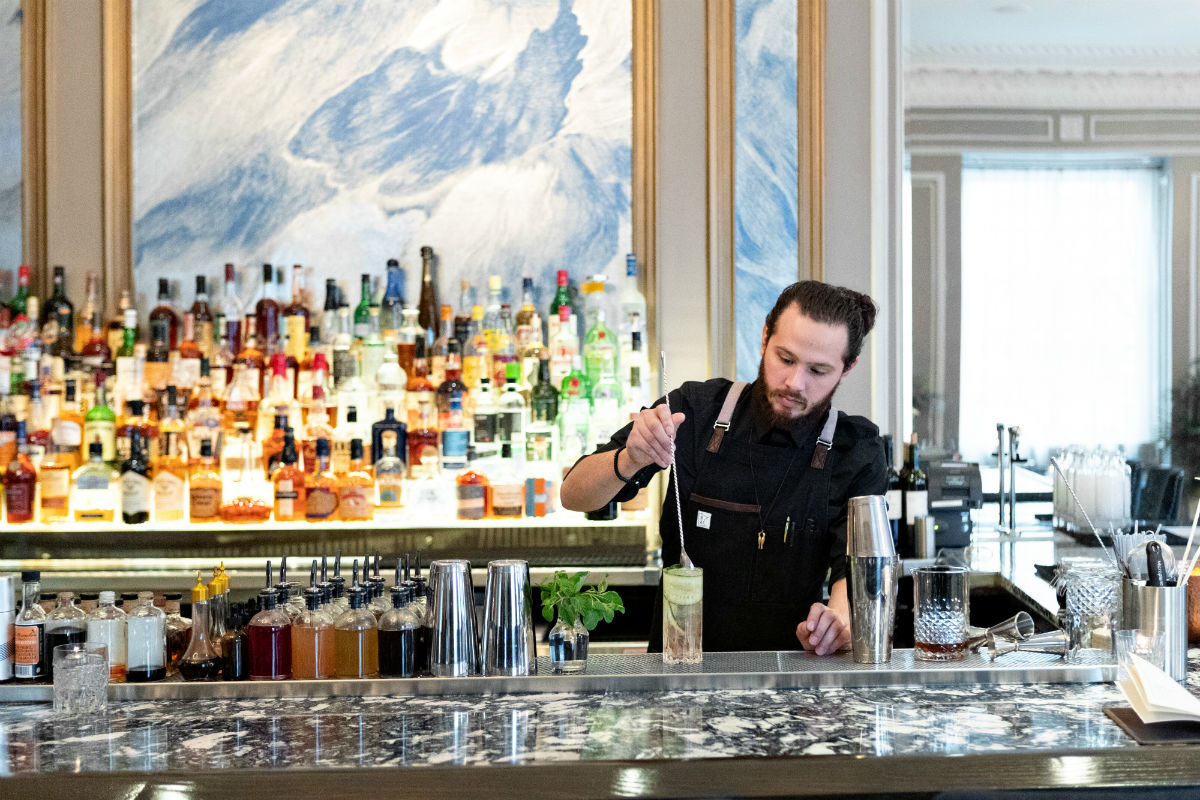At Shea, we pride ourselves on staying on top of what’s happening in design news. It helps us keep tabs on what’s fresh, inspiring, and happening in the world—and we make a few headlines of our own, too. Here are some recent articles delving into design, experience, and what’s buzzing in our community:
“Experiential is Expected: How Restaurants Must Create Unforgettable Moments in 2022” – FSR:
Restaurants continue to search for new ways to bring diners back for in-house meals, and turning every eating moment into a true experience is at the top of the to-do list to help deepen guest relationships and create a strong point of differentiation. Extra hospitality touches are a big factor—remembering guest preferences and providing top-notch service. Data tracking can help restaurants distinguish guest preferences for dine-in, even if that data is collected by delving into takeout and delivery orders, and help restaurants market more effectively. It’s that personalized service, along with an experiential space, that will help fulfill the dine-in cravings that guests are having.
“Air Filters and Outdoor Spaces: Office Costs Rise as Workers Return” – New York Times:
Pandemic-related costs are adding up for office towers as returning workers expect more out of their spaces. Upgraded air-filtration systems and the now-mandatory outdoor spaces are improvements that many developers considered to be “musts,” but have come at a price. Developers consider this to be an investment in the future, benefits that will help attract and retain tenants who are savvier than ever when it comes to cleanliness and air-quality practices.
“Minnesota Monthly Praises a Memorable Experience at Khaluna” – Shea:
The recent Khaluna review in Minnesota Monthly, where writer Jason DeRusha praises everything from the plates to the panache in the space
“Optimizing Coffee Bar Footprints” – Foodservice Equipment + Supplies:
Coffee bars are a popular option in buildings of all types—from cafes and restaurants to office and university buildings. This Foodservice Equipment & Supplies piece looks at how to design them to optimize their spaces, including the stations to include, the traffic flow to consider, and the retail elements to add. The design will be driven by the coffee bar’s menu and operations, determining what equipment will be needed (and what space-saving equipment can be employed). Logistics are important in a small-footprint operation so that employees can create drinks and snacks with minimal steps during rush periods—functionality is key. And considering layout for off-premises pickup from online and delivery orders is more important than ever, with designated stations created to move these functions out of the way.
“The Open Office Plan is Dead. Long Live the Open Office Plan.” – Commercial Observer:
Commercial Observer dives into the next phase of the much-maligned open-office plan. With more companies transforming their offices to include additional collaborative space, creative ways of finding private areas (such as adding phone booths for private conversations and focused work time) are imperative. It’s all about adapting to changing needs, and those are different for every client and corporation. Open office plans aren’t necessarily the problem—especially when there’s modular furniture and moveable pieces for flexibility—it’s just a matter of adding in a variety of spaces where employees can carve out an area to call their own.
“Workplace Reinvention: A Shea 2022 Outlook on the Office” – Shea:
The latest How We Create article by Shea, taking a critical look at where workplace design is headed in the next generation
“2022 Workplace Trends: Infusing Experience Into Design” – Work Design:
Experience has become paramount in office design, as it’s the primary benefit of the workplace that can’t be replicated virtually—that feeling of coming together is key. Work Design explores how experience-based design can be customized for every company, with flexibility and the company’s needs at its heart. Every sense can be a part of the experiential design, with brand touchpoints at every turn. The piece looks at how two companies have brought experiential design to life in their offices to further their ethos while best serving employees.
“As Omicron Bears Down on Retailers, Landlords Get Creative to Fill Space” – New York Times:
Retail real estate has been a tough business over the past several years, but this New York Times piece notes that in spite of recovery in Q3 of 2021, the latest Coronavirus variant is leading to lowered foot traffic—a continuation of the Covid-19 roller coaster. Over the holiday season, landlords made adjustments to bring in pop-ups to fill vacant spaces (a popular pandemic solution to help small businesses and keep bringing in money for landlords, with potential for permanency) and extended further flexibility in rent and revenue sharing to current tenants. Digital advertising is one solution to fill empty storefront windows, while other landlords have turned to public art to build community and attract eyes. The story dives into creative solutions being employed across the country as retail continues to evolve.
“Interlachen Country Club to Undergo a $30 Million Capital Improvement Project With Shea at the Helm” – Shea:
The Business Journal breaks the news on the massive capital improvement project at Interlachen, in design partnership with Shea
“4 Trends Shaping Modern Restaurants” – Foodservice Equipment + Supplies:
Foodservice Equipment + Supplies looks at how back-of-house trends are working to support the next era of front-of-house restaurant design. Brands are looking to focus on customer experience more than ever before, and kitchen operations need to be ready to help drive that mission. Electric and woodfire kitchens are on the rise, along with ventless equipment, for size and efficiency reasons. Production and pickup areas designated specifically for off-premises dining are musts as the sector continues to grow, directly impacting restaurant design—whether it’s creating additional counter space, adding cubbies, or building a special window or market area to help with expediting. Any equipment, automation, and robotics that can help save on labor is being brought quickly into kitchens—and many of those kitchens are commissary, ghost, and virtual kitchens, with shared options making it possible for new brands to launch or parent companies of several brands to merge their production in one space.
“Butcher & the Boar Named a 2022 Restaurant to Watch Out For” – Shea:
A roundup of 2022 restaurants-on-the-horizon stories for the Twin Cities from the Star Tribune and Business Journal, including the Shea iteration of Butcher & the Boar in the North Loop
January 14, 2022
Shea Links: January

